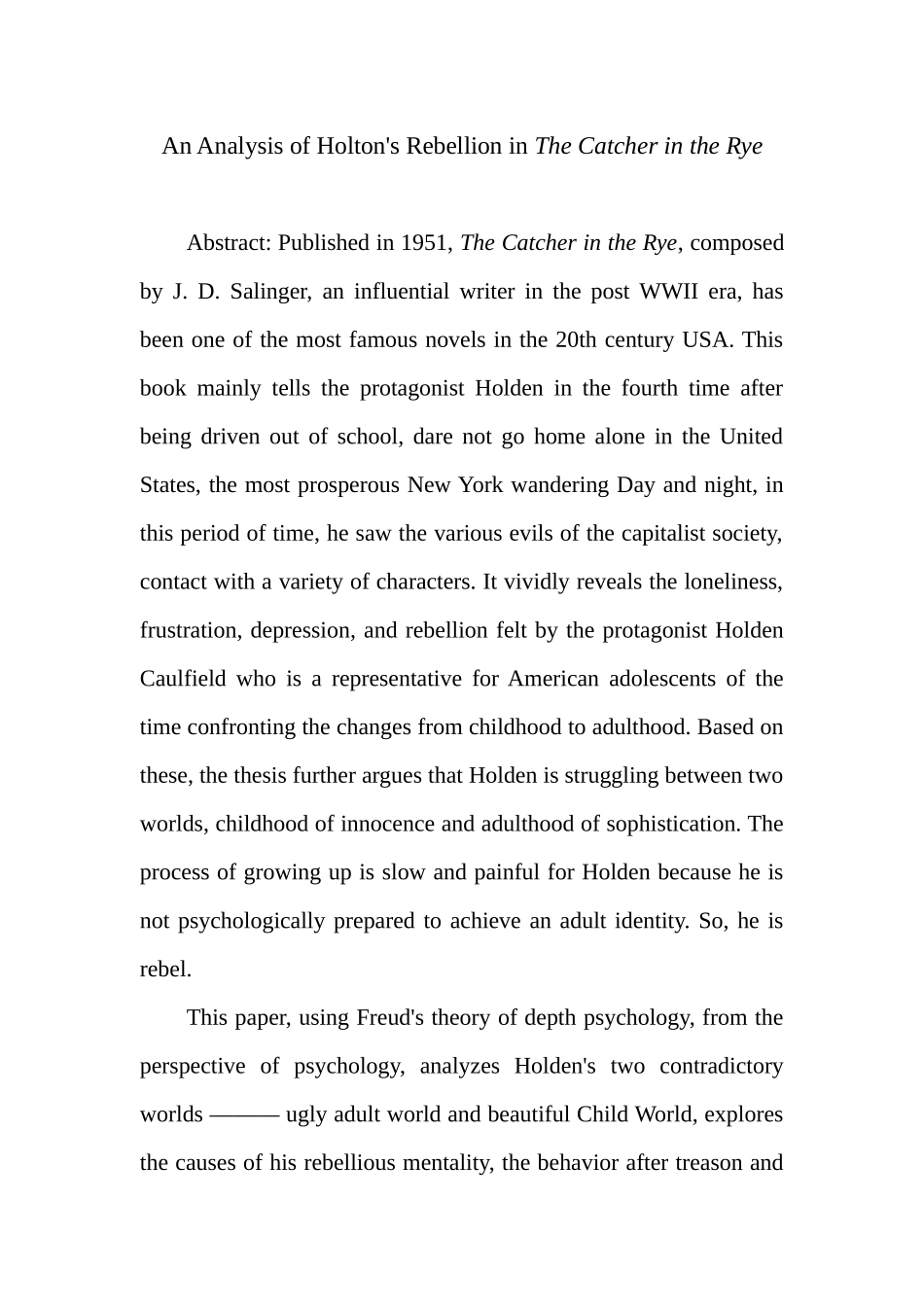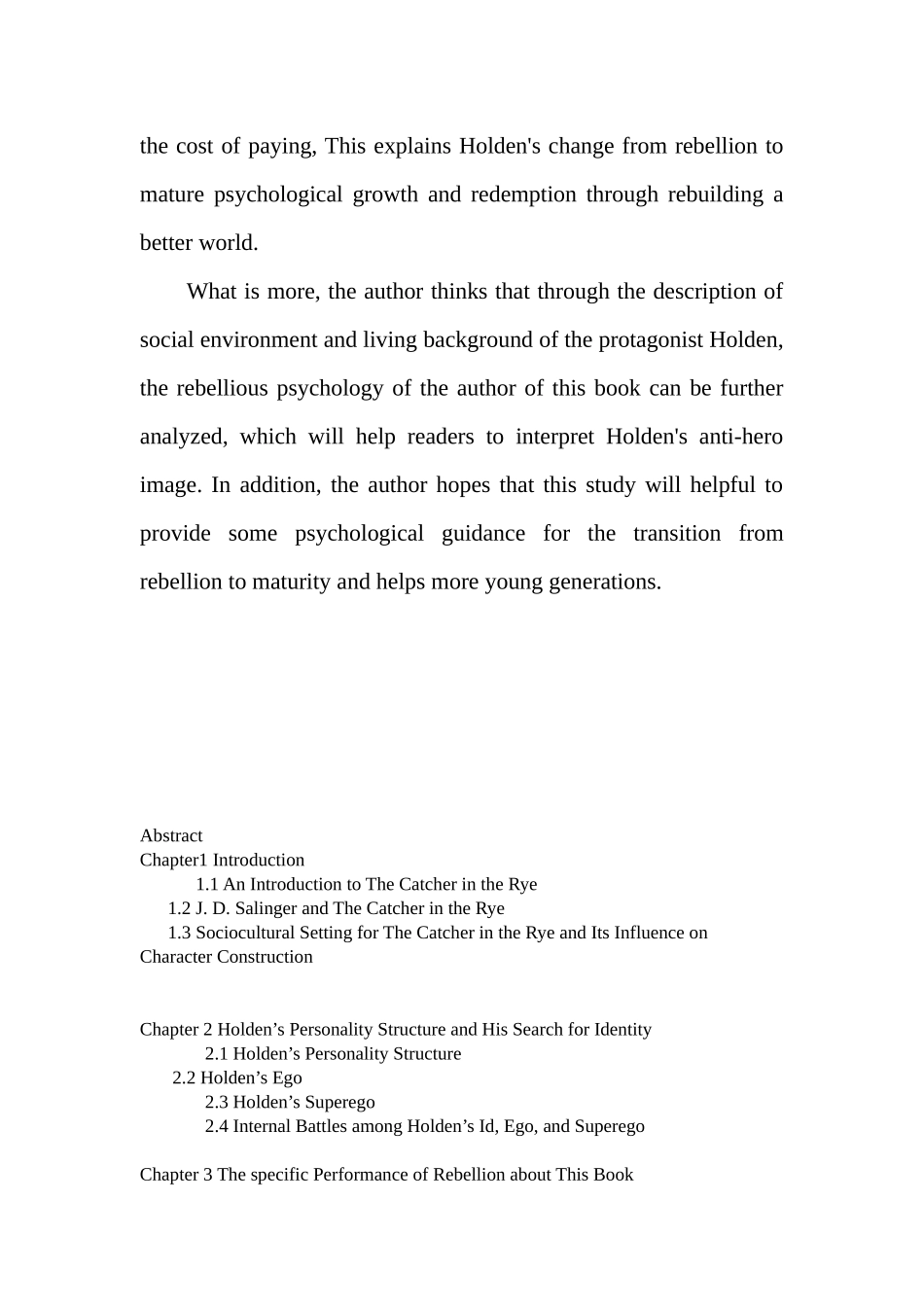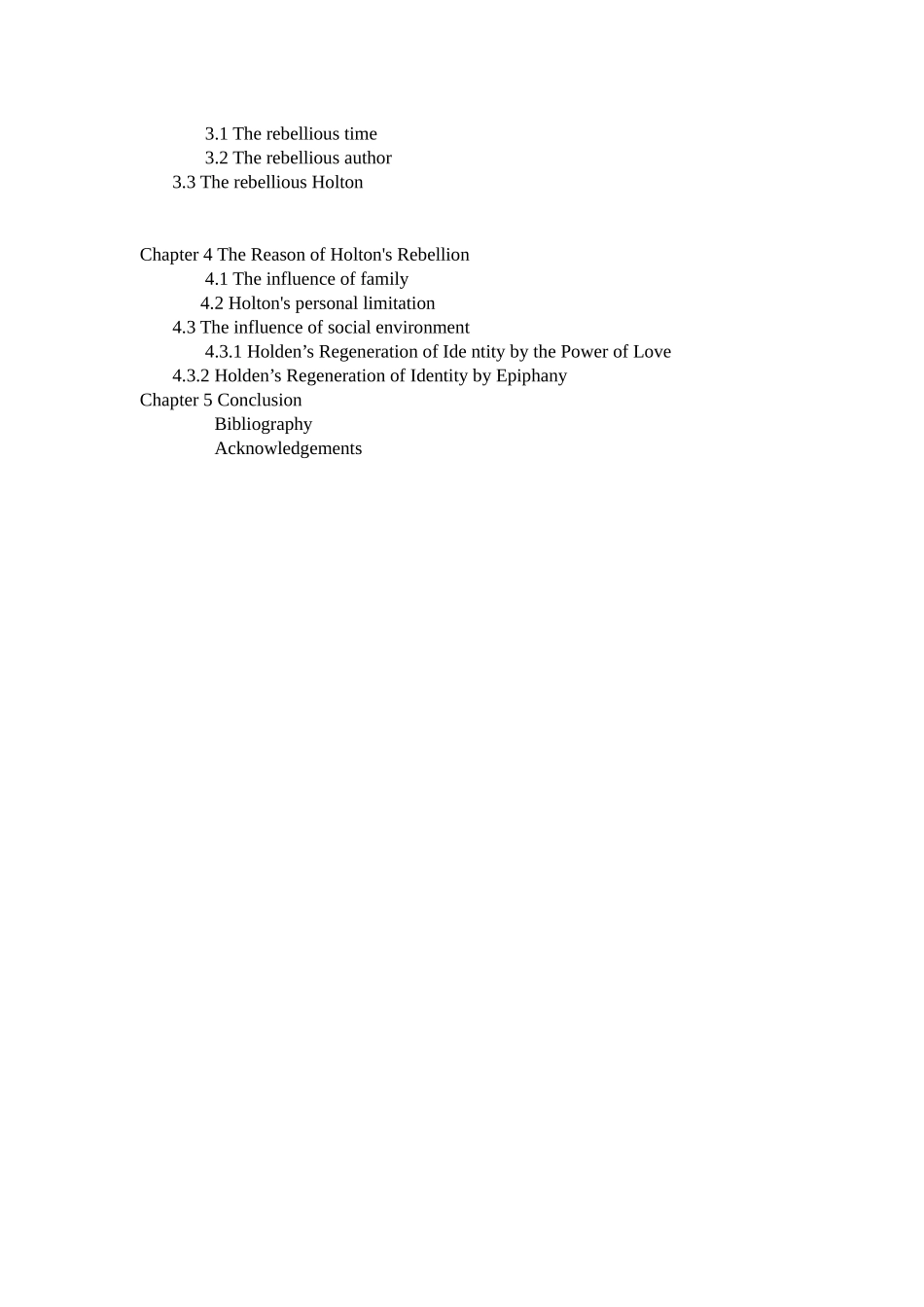An Analysis of Holton's Rebellion in The Catcher in the RyeAbstract: Published in 1951, The Catcher in the Rye, composed by J. D. Salinger, an influential writer in the post WWII era, has been one of the most famous novels in the 20th century USA. This book mainly tells the protagonist Holden in the fourth time after being driven out of school, dare not go home alone in the United States, the most prosperous New York wandering Day and night, in this period of time, he saw the various evils of the capitalist society, contact with a variety of characters. It vividly reveals the loneliness, frustration, depression, and rebellion felt by the protagonist Holden Caulfield who is a representative for American adolescents of the time confronting the changes from childhood to adulthood. Based on these, the thesis further argues that Holden is struggling between two worlds, childhood of innocence and adulthood of sophistication. The process of growing up is slow and painful for Holden because he is not psychologically prepared to achieve an adult identity. So, he is rebel.This paper, using Freud's theory of depth psychology, from the perspective of psychology, analyzes Holden's two contradictory worlds ——— ugly adult world and beautiful Child World, explores the causes of his rebellious mentality, the behavior after treason and the cost of paying, This explains Holden's change from rebellion to mature psychological growth and redemption through rebuilding a better world.What is more, the author thinks that through the description of social environment and living background of the protagonist Holden, the rebellious psychology of the author of this book can be further analyzed, which will help readers to interpret Holden's anti-hero image. In addition, the author hopes that this study will helpful to provide some psychological guidance for the transition from rebellion to maturity and helps more young generations. Abstract Chapter1 Introduction 1.1 An Introduction to The Catcher in the Rye 1.2 J. D. Salinger and The Catcher in the Rye 1.3 Sociocultural Setting for The Catcher in the Rye and Its Influence on Character Construction Chapter 2 Holden’s Personality Structure and His Search for Identity 2.1 Holden’s Personality Structure 2.2 Holden’s Ego 2.3 Holden’s Superego 2.4 Internal Battles among Holden’s Id, Ego, and Superego Chapter 3 The specific Performance of Rebellion about This Book 3.1 The rebellious time3.2 The rebellious author 3.3 The rebellious Holton Chapter 4 The Reason of Holton's Rebellion4.1 The influence of family 4.2 Holton's personal limitation 4.3 The influence of social environment4.3.1 Holden’s Regeneration of Ide ntity by the Power of Love 4.3.2 Holden’s Regeneration of Identity by Epiphany Chapter 5 ConclusionBibliography Acknowledgements












